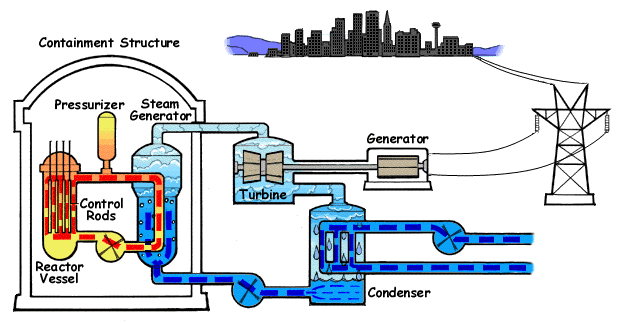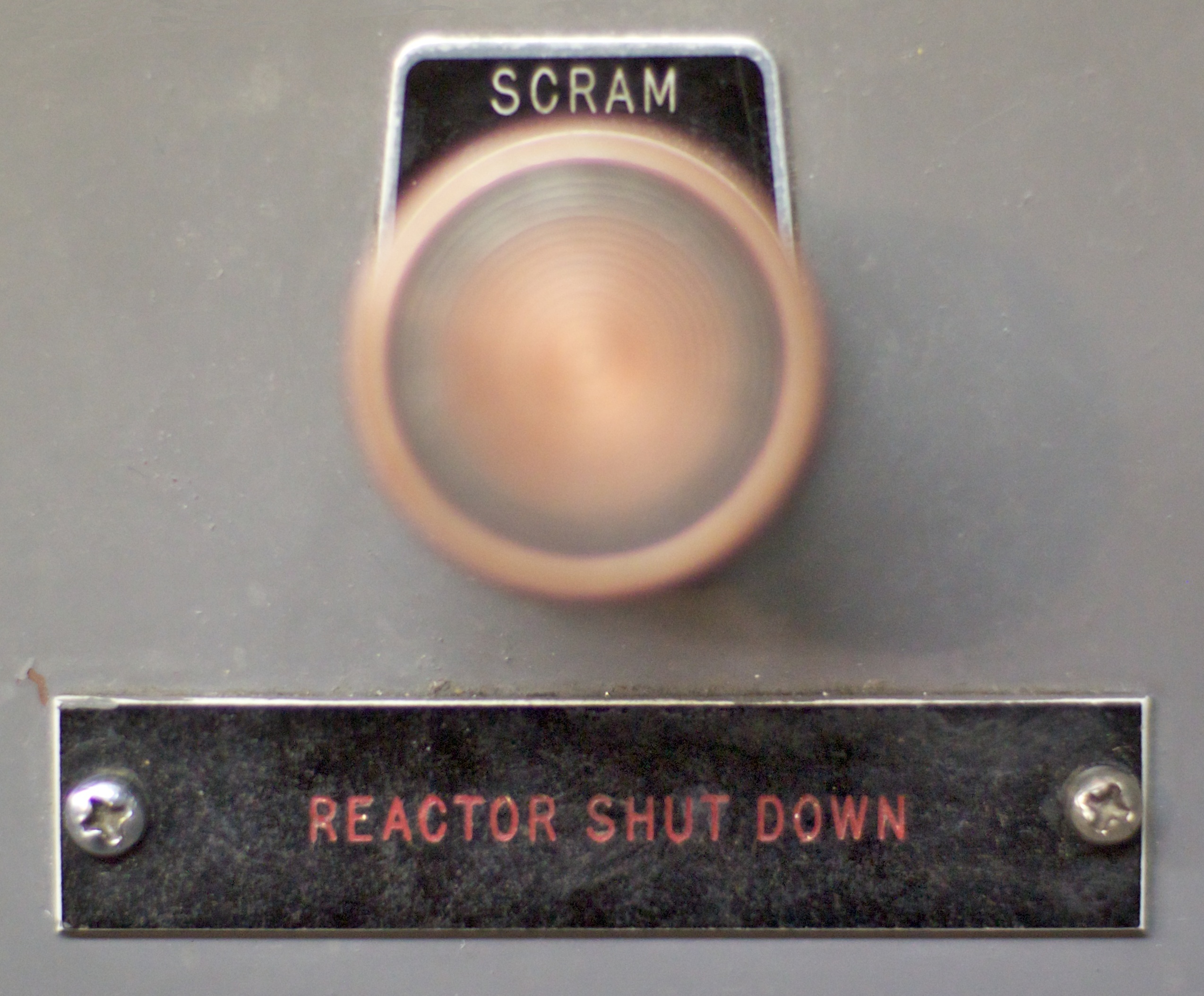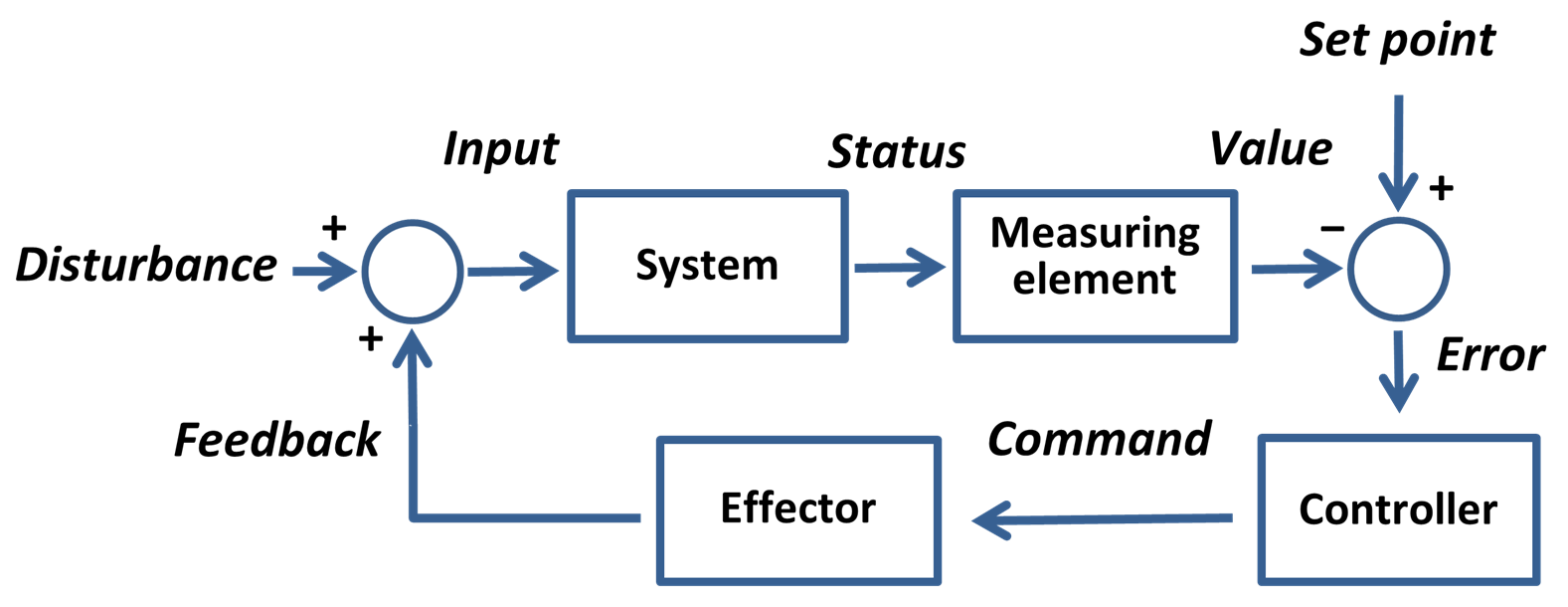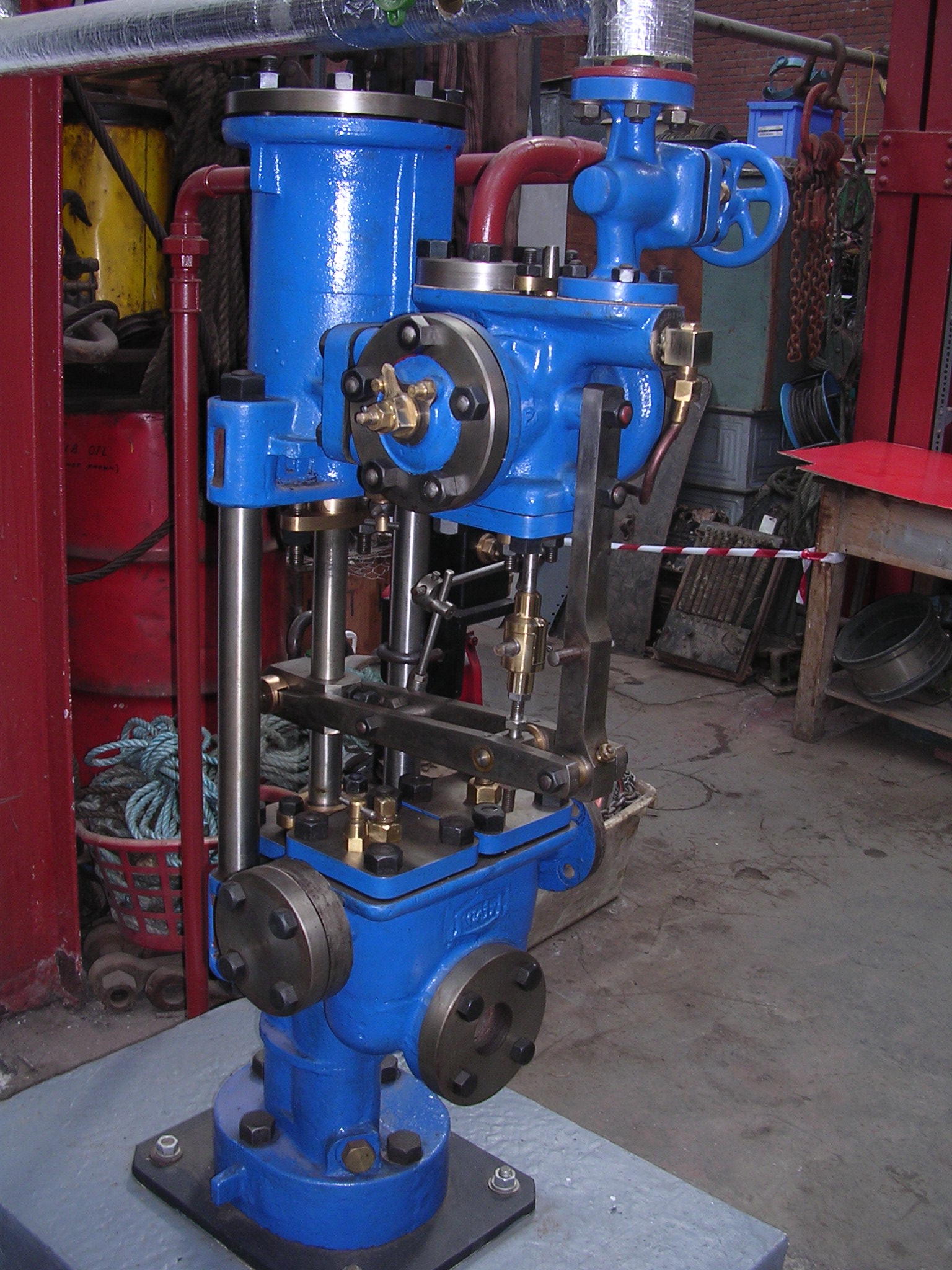|
TMI-2
The Three Mile Island accident was a partial meltdown of the Three Mile Island, Unit 2 (TMI-2) reactor in Pennsylvania, United States. It began at 4 a.m. on March 28, 1979. It is the most significant accident in U.S. commercial nuclear power plant history. On the seven-point International Nuclear Event Scale, it is rated Level 5 – Accident with Wider Consequences. The accident began with failures in the non-nuclear secondary system followed by a stuck-open pilot-operated relief valve (PORV) in the primary system that allowed large amounts of nuclear reactor coolant to escape. The mechanical failures were compounded by the initial failure of plant operators to recognize the situation as a loss-of-coolant accident (LOCA). The failure of operators is attributed to the out-of-the-loop performance problem. TMI training and procedures left operators and management ill-prepared for the deteriorating situation. During the event these inadequacies were compounded by design fl ... [...More Info...] [...Related Items...] OR: [Wikipedia] [Google] [Baidu] |
Three Mile Island Nuclear Generating Station
Three Mile Island Nuclear Generating Station (commonly abbreviated as TMI) is a closed nuclear power plant on Three Mile Island in Londonderry Township, Dauphin County, Pennsylvania on Lake Frederic, a reservoir in the Susquehanna River just south of Harrisburg. It has two separate units, TMI-1 (owned by Constellation Energy) and TMI-2 (owned by EnergySolutions). The plant was the site of the most significant accident in United States commercial nuclear energy when, on March 28, 1979, TMI-2 suffered a partial meltdown. According to the Nuclear Regulatory Commission (NRC) report, the accident resulted in no deaths or injuries to plant workers or in nearby communities. Follow-up epidemiology studies did not find causality between the accident and any increase in cancers. One work-related death has occurred on-site during decommissioning. The reactor core of TMI-2 has since been removed from the site, but the site has not been fully decommissioned. In July 1998, Amergen Energy ( ... [...More Info...] [...Related Items...] OR: [Wikipedia] [Google] [Baidu] |
Nuclear Meltdown
A nuclear meltdown (core meltdown, core melt accident, meltdown or partial core melt) is a severe nuclear reactor accident that results in core damage from overheating. The term ''nuclear meltdown'' is not officially defined by the International Atomic Energy Agency or by the United States Nuclear Regulatory Commission. It has been defined to mean the accidental melting of the core of a nuclear reactor, however, and is in common usage a reference to the core's either complete or partial collapse. A core meltdown accident occurs when the heat generated by a nuclear reactor exceeds the heat removed by the cooling systems to the point where at least one nuclear fuel element exceeds its melting point. This differs from a fuel element failure, which is not caused by high temperatures. A meltdown may be caused by a loss of coolant, loss of coolant pressure, or low coolant flow rate or be the result of a criticality excursion in which the reactor is operated at a power level that exc ... [...More Info...] [...Related Items...] OR: [Wikipedia] [Google] [Baidu] |
Pressurized Water Reactor
A pressurized water reactor (PWR) is a type of light-water reactor, light-water nuclear reactor. PWRs constitute the large majority of the world's nuclear power plants (with notable exceptions being the UK, Japan and Canada). In a PWR, the primary nuclear reactor coolant, coolant (water) is pumped under high pressure to the reactor core where it is heated by the energy released by the Nuclear fission, fission of atoms. The heated, high pressure water then flows to a Water-tube boiler, steam generator, where it transfers its thermal energy to lower pressure water of a secondary system where steam is generated. The steam then drives turbines, which spin an electric generator. In contrast to a boiling water reactor (BWR), pressure in the primary coolant loop prevents the water from boiling within the reactor. All light-water reactors use ordinary water as both coolant and neutron moderator. Most use anywhere from two to four vertically mounted steam generators; VVER reactors use horizo ... [...More Info...] [...Related Items...] OR: [Wikipedia] [Google] [Baidu] |
Eastern Time Zone
The Eastern Time Zone (ET) is a time zone encompassing part or all of 23 states in the eastern part of the United States, parts of eastern Canada, the state of Quintana Roo in Mexico, Panama, Colombia, mainland Ecuador, Peru, and a small portion of westernmost Brazil in South America, along with certain Caribbean and Atlantic islands. Places that use: * Eastern Standard Time (EST), when observing standard time (autumn/winter), are five hours behind Coordinated Universal Time ( UTC−05:00). * Eastern Daylight Time (EDT), when observing daylight saving time (spring/summer), are four hours behind Coordinated Universal Time ( UTC−04:00). On the second Sunday in March, at 2:00 a.m. EST, clocks are advanced to 3:00 a.m. EDT leaving a one-hour "gap". On the first Sunday in November, at 2:00 a.m. EDT, clocks are moved back to 1:00 a.m. EST, thus "duplicating" one hour. Southern parts of the zone (Panama and the Caribbean) do not observe daylight saving time ... [...More Info...] [...Related Items...] OR: [Wikipedia] [Google] [Baidu] |
Epidemiological
Epidemiology is the study and analysis of the distribution (who, when, and where), patterns and determinants of health and disease conditions in a defined population. It is a cornerstone of public health, and shapes policy decisions and evidence-based practice by identifying risk factors for disease and targets for preventive healthcare. Epidemiologists help with study design, collection, and statistical analysis of data, amend interpretation and dissemination of results (including peer review and occasional systematic review). Epidemiology has helped develop methodology used in clinical research, public health studies, and, to a lesser extent, basic research in the biological sciences. Major areas of epidemiological study include disease causation, transmission, outbreak investigation, disease surveillance, environmental epidemiology, forensic epidemiology, occupational epidemiology, screening, biomonitoring, and comparisons of treatment effects such as in clinical trials. E ... [...More Info...] [...Related Items...] OR: [Wikipedia] [Google] [Baidu] |
Scram
A scram or SCRAM is an emergency shutdown of a nuclear reactor effected by immediately terminating the fission reaction. It is also the name that is given to the manually operated kill switch that initiates the shutdown. In commercial reactor operations, this type of shutdown is often referred to as a "scram" at boiling water reactors (BWR), a "reactor ''trip''" at pressurized water reactors and at a CANDU reactor. In many cases, a scram is part of the routine shutdown procedure, which serves to test the emergency shutdown system. The etymology of the term is a matter of debate. United States Nuclear Regulatory Commission historian Tom Wellock notes that ''scram'' is English-language slang for leaving quickly and urgently, and cites this as the original and most likely accurate basis for the use of ''scram'' in the technical context. A persistent alternative explanation posits that ''scram'' is an acronym for "safety control rod axe man", which was supposedly coined by Enrico ... [...More Info...] [...Related Items...] OR: [Wikipedia] [Google] [Baidu] |
Setpoint (control System)
In cybernetics and control theory, a setpoint (SP; also set point) is the desired or target value for an essential variable, or process value (PV) of a control system. Departure of such a variable from its setpoint is one basis for error-controlled regulation using negative feedback for automatic control. Examples Cruise control The SP-PV error can be used to return a system to its norm. An everyday example is the cruise control on a road vehicle; where external influences such as gradients cause speed changes (PV), and the driver also alters the desired set speed (SP). The automatic control algorithm restores the actual speed to the desired speed in the optimum way, without delay or overshoot, by altering the power output of the vehicle's engine. In this way the SP-PV error is used to control the PV so that it equals the SP. A widespread use of SP-PV error control is the PID controller. Industrial applications Special consideration must be given for engineering application ... [...More Info...] [...Related Items...] OR: [Wikipedia] [Google] [Baidu] |
Reactor Protection System
A reactor protection system (RPS) is a set of nuclear safety and security components in a nuclear power plant designed to safely shut down the reactor and prevent the release of radioactive materials. The system can "trip" automatically (initiating a scram), or it can be tripped by the operators. Trips occurs when the parameters meet or exceed the limit setpoint. A trip of the RPS results in full insertion (by gravity in pressurized water reactors or high-speed injection in boiling water reactors) of all control rods and shutdown of the reactor. Pressurized water reactors Some of the measured parameters for US pressurized water plants would include: *"High power", auctioneered between high nuclear power and high differential temperature (delta T) between the inlet and outlet of the reactor vessel (a measure of the thermal power for a given RCS flowrate). *"High startup rate" (active below 10-4 percent power) at low power levels. *"High pressurizer pressure" *"Low reactor coolant ... [...More Info...] [...Related Items...] OR: [Wikipedia] [Google] [Baidu] |
Turbine Trip
A turbine trip is the emergency shutdown of a power-generation turbine due to unexpected events. Due to the number of issues that may cause a trip, they are relatively common events. Although it can occur on any such turbine, the term is most often seen in the field of nuclear power Nuclear power is the use of nuclear reactions to produce electricity. Nuclear power can be obtained from nuclear fission, nuclear decay and nuclear fusion reactions. Presently, the vast majority of electricity from nuclear power is produced b .... Many events can cause a turbine trip, including: * turbine overspeed condition where the turbine accelerates over its design speed, typically by 10% * low vacuum in the secondary cooling loop, or condenser * lubrication failure for any number of reasons * vibrations due to any number of issues In order to trip the turbine, inlet steam has to be removed from the feed. This is normally accomplished with dump valves that re-route the feed stream from the ... [...More Info...] [...Related Items...] OR: [Wikipedia] [Google] [Baidu] |
Feedwater Pump
A boiler feedwater pump is a specific type of pump used to pump feedwater into a steam boiler. The water may be freshly supplied or returning condensate produced as a result of the condensation of the steam produced by the boiler. These pumps are normally high pressure units that take suction from a condensate return system and can be of the centrifugal pump type or positive displacement type. Construction and operation Feedwater pumps range in size up to many kilowatts and the electric motor is usually separated from the pump body by some form of mechanical coupling. Large industrial condensate pumps may also serve as the feedwater pump. In either case, to force the water into the boiler, the pump must generate sufficient pressure to overcome the steam pressure developed by the boiler. This is usually accomplished through the use of a centrifugal pump. Another common form of feedwater pump runs constantly and is provided with a minimum flow device to stop overpressuring th ... [...More Info...] [...Related Items...] OR: [Wikipedia] [Google] [Baidu] |
Air Line
An air line is a tube, or hose, that contains and carries a compressed air supply. In industrial usage, this may be used to inflate car or bicycle tyres or power tools worked by compressed air, for breathing apparatus in hazardous environments and to operate many other pneumatic systems. Air lines provide compressed air for a wide range of uses and to cater for a variety of uses air lines are manufactured in a range of corrosion-resistant materials. Typically air lines are made with flexible hose or rigid pipe. Air line hoses provide flexibility and mobility for use, whereas a piped air line is more permanent and resistant to damage. For a typical compressed air system, both types of air lines are used in conjunction. Air line hose Air line hoses are flexible tubes used to convey pressurised air. They are commonly used for carrying a supply of compressed air to operate pneumatic powered systems, such as a road vehicle air brake system for large vehicles and a railway air brake ... [...More Info...] [...Related Items...] OR: [Wikipedia] [Google] [Baidu] |
Condensate Polisher
A condensate polisher is a device used to filter water condensed from steam as part of the steam cycle, for example in a conventional or nuclear power plant (powdered resin or deep bed system). It is frequently filled with polymer resins which are used to ion exchange, remove or exchange ions such that the purity of the condensate is maintained at or near that of distilled water. Description Condensate polishers are important in systems using the boiling and condensing of water to transport or transform thermal energy. Using technology similar to a water softener, trace amounts of minerals or other contamination are removed from the system before such contamination becomes concentrated enough to cause problems by depositing minerals inside pipes, or within precision-engineered devices such as boilers, steam generator (nuclear power), steam generators, heat exchangers, steam turbines, cooling towers, and Condenser (heat transfer), condensers. The removal of minerals has the seconda ... [...More Info...] [...Related Items...] OR: [Wikipedia] [Google] [Baidu] |







